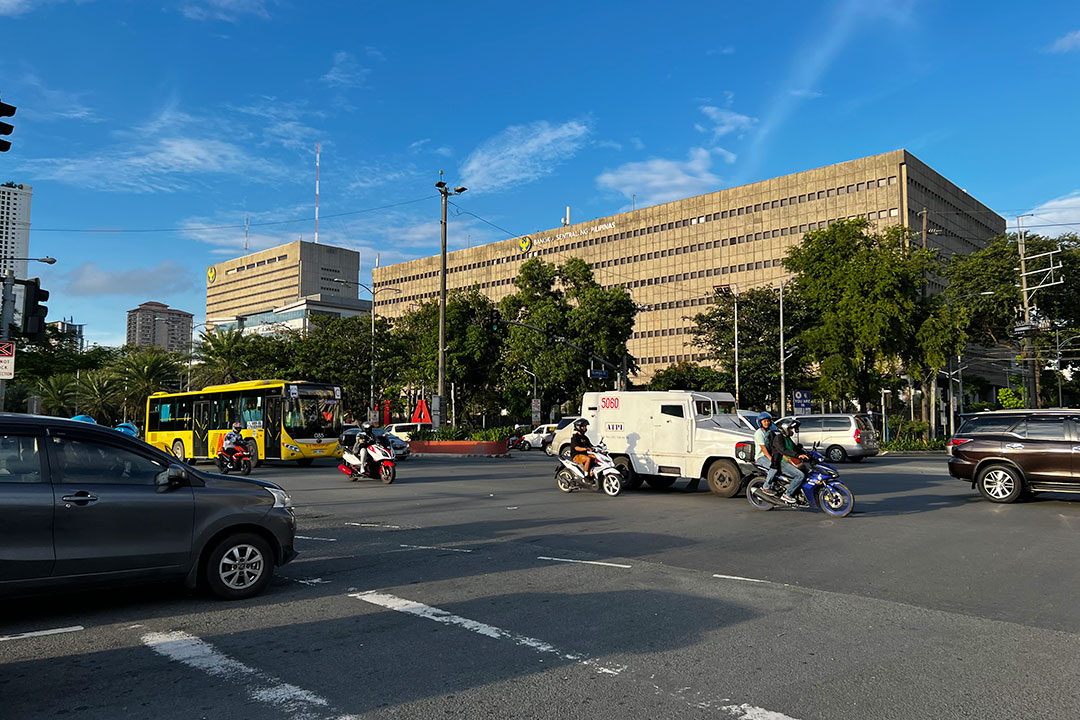




Quarterly Economic Growth Release: More BSP cuts to come
 DOWNLOAD
DOWNLOAD

Monthly Economic Update: Fed catches up
 DOWNLOAD
DOWNLOAD

Inflation Update: Steady and mellow
 DOWNLOAD
DOWNLOAD


BSP has leeway to keep rates steady

The Bangko Sentral ng Pilipinas (BSP) still has room to extend its policy pause even as inflation is expected to have picked up further last month, its top official said.
BSP Governor Eli M. Remolona, Jr. told reporters on Monday the central bank has “leeway” to keep its benchmark rate steady at its meeting this month.
He said the central bank has already considered a potential pickup in April inflation.
“That’s already factored in. We know it will be a bit high because of base effects. If it’s too high, that will postpone our easing,” he said in mixed English and Filipino.
A BusinessWorld poll of 16 analysts last week yielded a median estimate of 4.1% for April inflation. This would surpass the 2-4% target for the first time since 4.1% in November 2023 and would be faster than 3.7% in March though slower than 6.6% a year ago.
The BSP expects inflation at 3.5-4.3% for the month. April consumer price index data will be released on May 7.
The central bank chief said they are still leaning toward hawkishness amid elevated inflation.
“Inflation is hovering around 3.9%, so that’s risky,” Mr. Remolona said. “Inflation should be around 3%. The 3.9%, it is easy to fall back to 4.1%, so we are still hawkish.”
The BSP may begin to cut rates if inflation can ease to about 3% and stay within that range for several months, he said.
“If we do ease, it would be by just 25 basis points (bps). If it’s more than 25 bps, that’s like there is a recession or a hard landing. Right now, we don’t see it coming.”
The Monetary Board will review policy on May 16. The BSP kept its policy rate at a 17-year high of 6.5% for a fourth straight meeting in April.
The central bank raised borrowing costs by 450 bps from May 2022 to October 2023 to tame red-hot inflation.
ANZ Research said in a report that it does not expect the BSP to deliver any rate cuts this year.
“The narrative in the Philippines is slightly different in that inflation is running close to the upper bound of the official target owing to elevated rice and energy prices, both of which are imported,” it said.
“Persistent currency weakness arising from monetary easing will now potentially push up the landed costs of these imports,” it added.
Mr. Remolona earlier said that if inflation risks persist, policy easing might be delayed until as late as the first quarter of 2025.
PESO INTERVENTION
Meanwhile, Mr. Remolona said the BSP has only had to intervene in the foreign exchange market in “small amounts” amid the recent weakness of the peso.
“We were active in small amounts, not to affect the value but to maintain orderly markets,” he said.
After hitting 17-month lows against the dollar in the past two weeks, the peso has begun to stabilize, closing at PHP 57.22 versus the greenback on Monday, appreciating by 12.5 centavos from its PHP 57.345 finish on Friday.
Year to date, the peso has declined by P1.85 from its end-2023 close of PHP 55.37 a dollar.
The BSP chief added that he is not that concerned about the peso’s recent depreciation.
“There is not much stress yet in movements of the peso. We’d like to intervene significantly when there’s stress,” Mr. Remolona said.
“We know it’s a strong dollar because a lot of other currencies have also weakened. It’s not a very strong ground for intervention,” he added.
In October 2022, the peso reached a record low of P59 against the dollar. This added to inflationary pressures and prompted the BSP to intervene in the foreign exchange market and raise interest rates. – Luisa Maria Jacinta C. Jocson, Reporter
This article originally appeared on bworldonline.com





 By BusinessWorld
By BusinessWorld